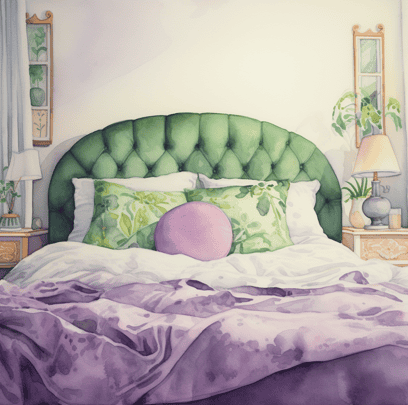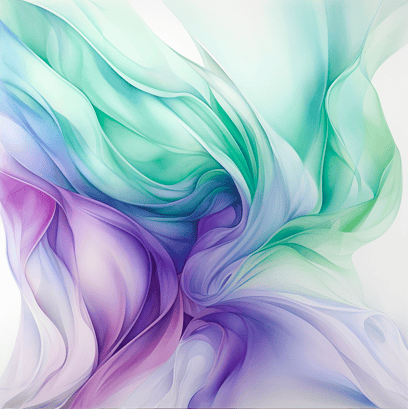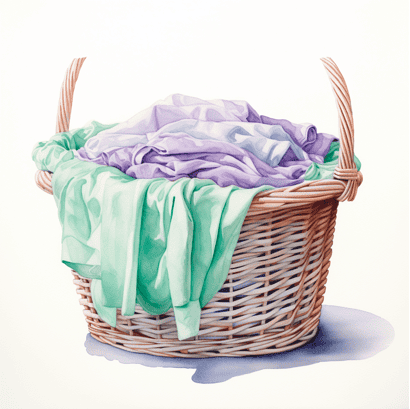
Could your pillowcase cause acne, secretly sabotaging your skincare routine? Today, we’re diving into how choosing the right pillowcase can be a game-changer for healthy skin.
Hi, I’m Hazel
I gave up on skincare after years of issues with acne and sensitive skin.
But after going plant-based, my skin cleared up and even started to glow. Now I help women reveal their natural beauty with simple, delicious plant-based food.
I also used to be a nurse, and love nerding out on nutritional science (high-quality science, that is).

As usual, this post is based on the strongest nutritional evidence I could find with a focus on the simplest, most delicious foods
…because who has time to waste on actions that don’t work?
The quick version:
Yes, pillowcases can cause acne. Dirty pillowcases accumulate oils, dead skin cells, and bacteria, which can clog pores and lead to acne breakouts, especially if you have oily or sensitive skin.
Can Your Pillowcase Cause Acne?

Are you diligently sticking to your skincare routine yet still battling persistent acne? It’s incredibly frustrating when you invest time and effort into caring for your skin, only to see the pimples crop back up.
If you already have a great skincare routine and are eating a plant-based diet, then the culprit could be closer than you think—right where you rest your head each night.
Cotton pillowcases, while popular, are highly absorbent and can retain oils from your skin and hair, exacerbating acne. On the other hand, silk pillowcases offer a smoother surface that reduces friction and irritation, making them ideal for those with sensitive skin or oily skin. If you often wake up with irritated skin, the material of your pillowcase might be to blame.
Regardless of the type of material, dirty pillowcases are notorious for harbouring dead skin cells, oils, and bacteria, all of which can sabotage clear skin.
Understanding how your pillowcase material interacts with your skin can be a game-changer, helping you take a significant step towards clearer, healthier-looking skin.
You may also like: Is hard water secretly causing you acne?
Types of Pillowcases and Their Impact on Skin
What type of material is your pillowcase made of? Each interacts with your skin differently:

- Natural silk pillowcases: Ideal for those with dry skin, as they help retain much moisture overnight, keeping skin hydrated.
- Bamboo pillowcases: Perfect for acne-prone skin due to their hypoallergenic and moisture-wicking properties, which minimise the buildup of irritants and bacteria.
- Cotton pillowcases: Popular for their breathability and ease of washing, though they can absorb natural oils and moisture, which might not be ideal for very dry skin.
- Satin pillowcases: While they offer less friction and less irritation, which is beneficial for preventing mechanical acne, some may find that they do not breathe as well as other fabrics like cotton, potentially trapping sweat. However, their smooth texture can be particularly gentle on the skin, making them a good option for reducing physical irritation.
You may also like:
Is Your Battle to Quit Smoking Sabotaging Your Skin?
Choosing the Right Pillowcase for Your Skin Type

Sensitive Skin
Opt for natural fibre pillowcases if you have sensitive skin. These materials are soft and gentle, significantly reducing the chance of irritation and keeping your complexion calm and clear.
Oily Skin
Consider materials like silk for their less friction qualities, which are essential for minimising skin irritation. Be cautious with satin pillowcases, though; they provide similar benefits but tend to have lower breathability, which might not suit oily skin.
Combating Bacterial Acne
For those dealing with bacterial acne, pillowcases with anti-microbial properties are a must. These materials help prevent the buildup of bacteria on the skin, lowering your risk of acne flare-ups.
Irritated Skin
A pillowcase with a high thread count offers a softer and smoother surface, which is ideal for reducing nightly skin irritation. This can be particularly beneficial for those with acne that’s exacerbated by physical irritation.
General Recommendations
Always select the best pillowcases that incorporate these specific features to enhance your overall skin health. Combining several of these qualities can provide the ultimate pillowcase solution tailored to your unique skin needs.
Maintenance Tips to Maximise Benefits

Consistent and proper maintenance of your pillowcase is crucial for preventing skin issues like acne.
It’s important to wash your pillowcase regularly to remove oils, acne-causing bacteria, and residues from skincare and hair products. When washing, use a gentle, skin-friendly detergent and opt for hot water to effectively kill dust mites and remove oil buildup.
Be cautious with fabric softeners; they can leave a waxy residue on fabrics, which might contribute to pore clogging and acne flare-ups. This residue can also interfere with the breathability and moisture-wicking properties of your pillowcase, which are essential for keeping your skin clear. Instead, consider using vinegar or baking soda as natural fabric softening alternatives that won’t leave harmful residues.
Additionally, replacing old pillows and ensuring you always have a clean pillowcase on hand is key. Unwashed pillowcases can quickly accumulate irritants that exacerbate skin conditions, so maintaining cleanliness is essential for your skin’s health.
Can your pillowcase cause acne?
So, can your pillowcase really be the secret culprit behind those frustrating breakouts? Absolutely. The right pillowcase isn’t just about luxury—it’s a critical ally in your fight against acne. By addressing the question, “Can pillowcase cause acne?” we’ve discovered that something as simple as switching your pillowcase can transform the health of your skin. Embrace this change tonight, and you might just find yourself waking up not only to a new day but to clearer, more radiant skin. Let’s put those acne worries to bed, once and for all!
References
Most references below will link to the original peer-reviewed study itself. However, sometimes I will link to a video over at NutritionFacts.org instead, which is by far the single best resource of brutally transparent nutritional evidence you will ever see. Dr Greger tells a great story about the realities of the science and if I think you will benefit more from one of his videos, the link will take you there instead.
Happy nerding!